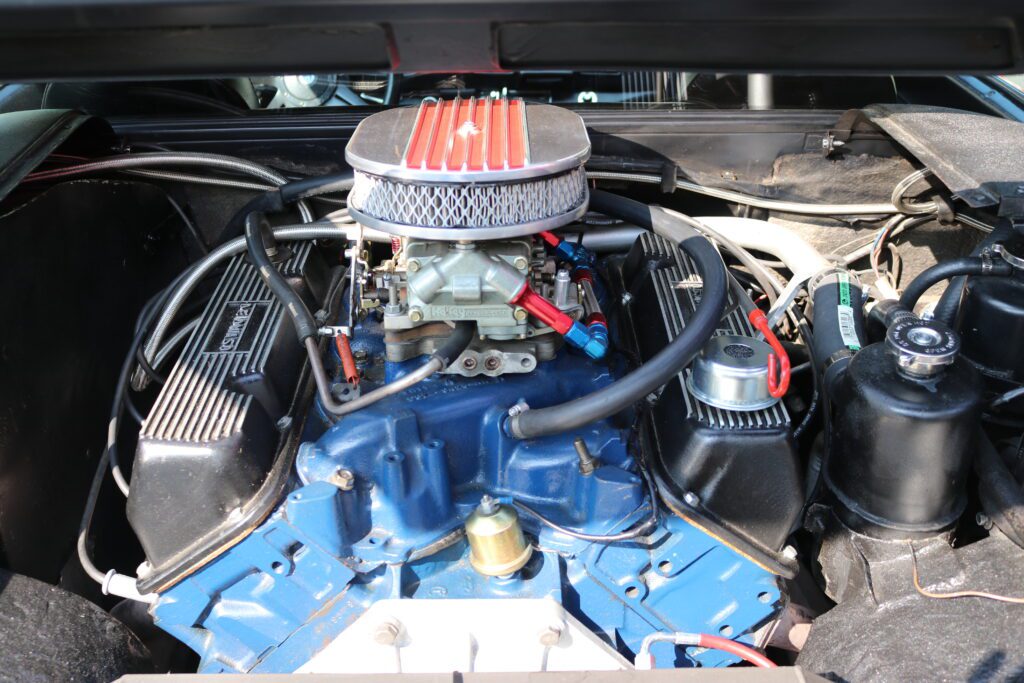UNIONVILLE, CT – The model name is Pantera. That’s the Italian word for “panther,” and it was back in late February that Jeffrey Tencer of Unionville finally purchased the De Tomaso Pantera mid-engine sports car that he’d lusted after and searched for with cat-like patience for decades.
“I had been looking for a Pantera for years. I actually had a poster of this car in 1973 in my bedroom right next to a Farrah Fawcett poster, and it took me 50 years to find one of these cars,” he said recently.

Before going any further, yes, the poster of the “Charlie’s Angels” star featured the unforgettable photo of her in a red, one-piece swimsuit, her head tilted back as she flashed a megawatt smile.
Tencer spotted a 1973 De Tomaso Pantera L (for “Lusso”or luxury) for sale by a private owner who lived in Indiana. The owner had it stored in Illinois near Chicago. “I flew out there to Midway Airport, took a look at the car, took it to a local mechanic to make sure it was sound, and I purchased the car that day,” he said.
It was case of one man’s misfortune becoming a bonanza for another. The previous owner had purchased the Pantera in 2016 and spent seven years restoring it. “He was at 95 percent of the restoration last summer, fell in his house, broke his hip, had to get a hip replacement, so he could never get in the car again so that’s why he sold the car,” Tencer said.
See the 1973 De Tomaso Pantera in action in this YouTube video…
—
De Tomaso Automobili Ltd. was founded in 1959 by Alejandro de Tomaso in Modena, Italy. It built the Pantera from 1971 into the early 1990s. The car was sold in United States by Lincoln-Mercury dealers and, in 1973, had a retail price of $9,999, Tencer said. That translates into more than $72,000 today.
“Unfortunately, these cars, like most Italian cars, are noted for rusting out because the Italians do not undercoat their cars, Tencer said.
It was only in the past three or four years that his desire to own a Pantera shifted into a more intense mode. “Either they were overpriced or they were fixer-uppers basically. You had to restore them. They were rusted. They had engine problems,” he said of the challenges of finding a suitable Pantera.


—
Neither Tencer nor anyone else can likely pinpoint just how many of the roughly 7,000 units that were manufactured remain on the road. Tencer said there are more than 2,000 in California and guesses that there may be only two or three in Connecticut.
“It’s actually a fun car to drive. It’s just that you have to constantly pay attention to the road because they are no modern conveniences. There’s no power steering. There’s no ABS. There’s no traction control,” he said.


—
The car does have some features that were uncommon at the time for sports cars.
“These cars had coilover shocks, which was unheard of in the ’70s. They didn’t even become popular until like the year 2000. Also, these were one of the few cars that actually had four-wheel disc brakes. And it had power windows, which were unheard of in a sports car in the ’70s,” Tencer said.
The Pantera also came with a weak air conditioning unit that fails to match those found in modern cars. “There’s only two vents in the middle of the car, so it cools down a little bit,” he said.
While the Pantera displays what has been called a chimera design from Italy, its power plant is straight out of Detroit. Tencer’s car began with a 351-cubic-inch Ford Cleveland V8 engine and a five-speed manual transmission.

“This car has headers installed in it. It doesn’t have the OEM cast iron exhaust manifolds, which were much quieter,” said Tencer, explaining that the swap was made by the previous owner. There was another change, too.
“They also decreased the horsepower in these cars starting in ’73 because of emissions and the insurance companies were upset about having high horsepower engines. Luckily, this car when it was rebuilt, it was rebuilt into a 408 (-cubic-inch) stroker, so it has all the original horsepower that the older models had and then some.”
The red exterior found on Tencer’s Pantera isn’t original. “This car was originally yellow from the factory. It’s probably a good thing that the previous owner had it stripped and repainted red ’cause I never would have bought a big banana,” he said.

“This actually is the original Pantera paint from ’73. They found cans of it ’cause it’s lacquer. It’s not the new paint. That’s why if you look closely you can actually see it’s starting to get some cracking, which lacquer does over time.” An example of cracking can be seen near the left tail light.
Tencer said older adults recall the Pantera, but younger folks go, “What is it?” When he took it for a spin for RIDE-CT, a man who was coming out of his house on a nearby street immediately spotted it and gasped in awe, “Is that a Pantera?”
Having only recently acquired it, Tencer has no plans to part with it. “Heck, no. This is staying with me until I can’t drive any more,” he said. “One advantage to this car. Yes, it’s an Italian car, but it has a Ford engine and a Ford transaxle, so you can actually go to Pep Boys and NAPA and get your parts.”


 RIDE-CT – Classic Cars Celebrating Classic Cars in Connecticut
RIDE-CT – Classic Cars Celebrating Classic Cars in Connecticut


